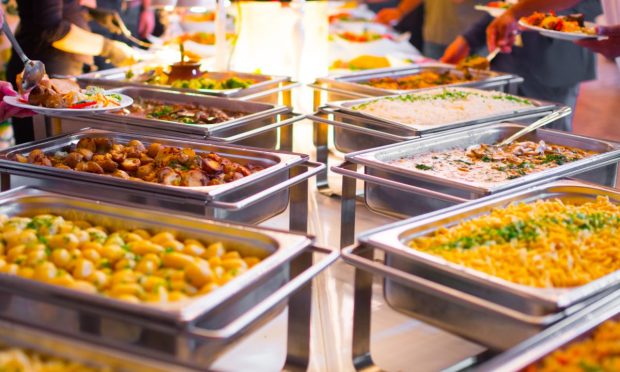Catering Set to Take a Bite Out of Restaurant and Grocery

It’s taken nearly three years, but the bruised and battered catering industry is finally eclipsing its pre-COVID revenue figures with a larger portion of total food sales than ever.
This, as Compass Group, the world’s largest catering company, announced Monday (Nov. 21) that its revenue has now surpassed what it was pre-pandemic.
“We’ve emerged from the pandemic as a stronger and more resilient business and reached the important milestone of revenue exceeding 2019 levels,” CEO Dominic Blakemore told analysts on a call accompanying the company’s Q4 and full-year 2022 earnings release.
In the final quarter, group revenue was up 16% relative to Q4 2019, suggesting greater engagement with catering than ever before. Certainly, some of this uptick can be attributed to rising prices, but the increase well exceeds the rate of inflation, which reached about 11% across Europe last month, according to EuroStat, and 8% in the U.S., according to the U.S. Bureau of Labor Statistics (BLS).
For the United Kingdom-based company, which operates across 40 countries, new business rose 5.7% relative to pre-pandemic, and the company expects to reach pre-pandemic margin levels going forward.
Similarly, competitor Sodexo, the second-largest foodservice company, is expecting its business go grow relative to pre-pandemic.
“You can see that in Q4, the group was back up to fiscal year 2019 levels … so we are confident that we should be able to exceed 2019 revenue levels in 2023,” CEO Sophie Bellon told analysts in October on the company’s most recent earnings call.
When it comes to corporate dining, catering may be gaining share from individual restaurant orders. In an interview with PYMNTS, Stefania Mallett, CEO and co-founder of ezCater, an online marketplace startup connecting businesses with restaurants and caterers, cited the example of an architectural glass manufacturing company looking to sell to an architect. Where once the expectation may have been that the company takes that architect out to lunch, she explained, now people expect to have the food brought to them.
“The only way you can have a really effective sales call is to bring in food for the entire architect’s office for all of the support people around a key architect,” Mallett said, “and then you get time with that key architect.”
Additionally, it is also becoming easier for consumers to opt for catering for at-home events such as parties, as restaurants and other food businesses launch simple-to-use digital catering ordering features. Quick-service restaurant (QSR) giant Subway, for instance, announced in May the launch of “Easy Order” catering.
“Before redesigning our catering program, we invested in extensive research to understand what guests really want,” Subway Director of Catering Jenn Saunders-Haynes explained in an interview with PYMNTS. “Our guests are looking for simple and convenient options to make decision-making easy, which is why we’re leaning into easy order and preselected catering options.”
Similarly, Instacart is simplifying the process of ordering catering from grocers. The company announced in August that it is integrating catering software subsidiary FoodStorm’s technology into its app to power catering orders and delivery for grocers both through the aggregator’s marketplace and through its white-label fulfillment solutions.
“In the first half of 2022, we’ve seen nearly a 20% increase in customers searching for ‘catering’ on Instacart compared to the same period last year,” Instacart Vice President of Product Jeanette Barlow said in a statement.
